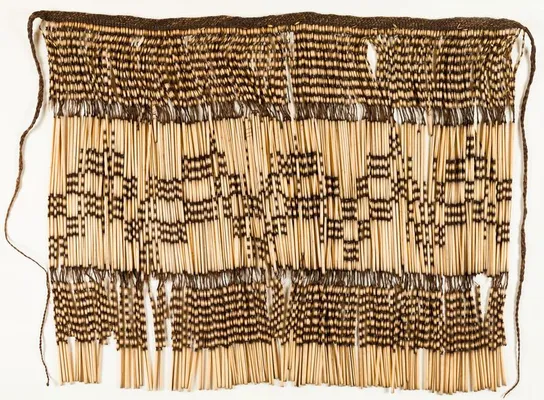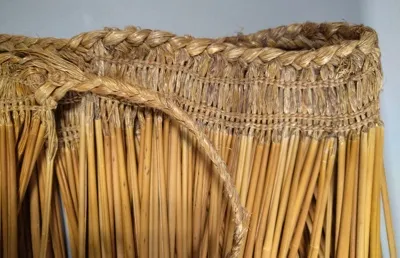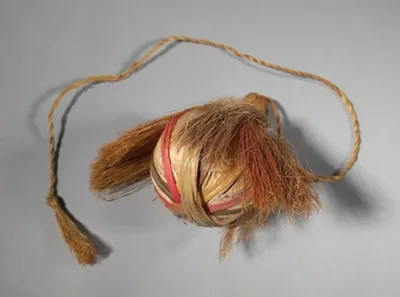by Hone Winder-Murray (Ngāi Te Rangi, Te Rarawa, Ngāti Kahungunu ki Wairarapa, Kāi Tahu), Pou Mātauranga Māori at Western Bay Museum in Katikati.
Matariki reflects on the past, celebrates the present and prepares for the future. All of those tenses seemed to flash before my eyes after a recent trip to Manaaki Whenua in Lincoln, Canterbury to their pā harakeke. I then dove into a quest to reconnect with woven taonga in our museum collection.
My trip to Manaaki Whenua was with five kairaranga from the three northern marae of Tauranga Moana - Te Rereatukāhia, Tuapiro and Otawhiwhi. We had identified missing cultivars from the respective kāinga and our mission was to collect some of those and re-establish them back on the marae.
Weaving, in all its forms, has always been a major connector. Reconnecting me with my own memories of different times, different places and different faces – but also instigating new experiences in new places with new faces. Weaving connects me to taonga and whakapapa. Strangely, weaving connects me to me, in its own quiet, unique and tender way. All of this, despite not being a weaver – YET.
I have spent many days and nights in my tupuna whare – Tamawhariua. As a baby, as a child and now as an adult. The smell and feeling of woven whāriki from inside my whare lingers in my senses. The single odd-fellow or boiled blackball lolly in the bottom corner of my nan’s kete, despite both having their own distinctive smells, were always tainted by the smell of dried harakeke. That memory lingers. The smell and textures of muka and feathers from kākahu or the sharp rustling sounds of piupiu twirling around me are vivid reminders of happiness. They are all memories that linger and always connect my wairua to someone or something, somewhere.
Kete Houhere
I didn’t spend much time with my taua but I did hear the stories of her traveling back to her beloved Moeraki, from Te Whiti in Wairarapa, to harvest her lacebark or ribbonwood to weave with. She wove kete and kākahu from the well prepared houhere bark.
This kete houhere has a main body woven in a takitahi style - the ‘one up, one down’ technique. There is a delicate fringe-like finish around the top and it has two handles of the same fibre. It is un-dyed.
Despite my taua passing away in 2003 and despite her not weaving this taonga - the houhere, the takitahi, the end product – they all evoke memories spiralling and pulsating through me. Memories of taua. I am reconnected to a time, to a place and to her. I am connected. Ao te pō, pō te ao.
Piupiu
The sharp distinctive sounds of the dried cylindrical strands of harakeke, swinging and twisting from the waist or shoulders is instantly recognisable to the trained ear. There’s a piupiu on the move.
The sound instantly transports me to my haka days of primary and college. Mostly primary school. I’m comforted and warmed by the memories of being a carefree kid with all of my cousins. Growing up in Katikati with only one primary school that is directly across the road from the only college. My cousins were all my school mates.
This piupiu in our collection is beautifully long with warm golden tones through the naturally curled body of un-scraped harakeke. It is finished off with the gathering of muka from each strand and plaited thickly around the top waistband section. There are remnants of dye attached to the muka of the scraped mid-sections.
Again, I am connected. Connected to my school days. Connected to my cousins. Connected to an early me. I am connected.
Poi raupō
Like many of the different materials used in weaving - it’s not always easy for non-weavers like myself to comprehend the different taonga that can be produced when seeing the material in its raw form.
Raupō, that wetland plant we all know, showcases that distinctive tall brown stem with its surrounding green, blade-like leaves protruding from beneath the water. Raupō was used to thatch roofs and create walls of whare and also used to build water rafts. A more delicate use for raupō - was poi.
The dried raupō leaves are fashioned around an inner material, often the dried soft brown seed heads, and the decorative application of those leaves featuring dyed or undyed material begins to take on the form of a poi. The circular section with the raupō materials is then bound closed with plaited muka taking on the form of a handle or grip completing the kinetic percussion instrument.
As our temperatures gradually become cooler, days are shorter and nights longer, we look towards Matariki as she begins to appear on our eastern skyline. The cultivars of harakeke on our three marae are now in the ground and their precious fans sparkle as beacons full of connections – past, present and future.
They are a beacon of whanaungatanga that reminds us of the connections and relationships forged to bring the taonga home. They are a beacon of whakapapa as we admire the whānau unit which makes up the fan, further reminding us of our own whānau connections. They are a beacon of kaitiakitanga and we are reminded of the tikanga that sits with raranga and our duty to care for all things within our natural world.
For now, most importantly, they serve as a beacon for a bright future where succession will play its role in revitalising and reinvigorating weaving with all its aspects back here, at our home and on our pā.
Explore more
-

kete | set
Caring for piupiu in collections


